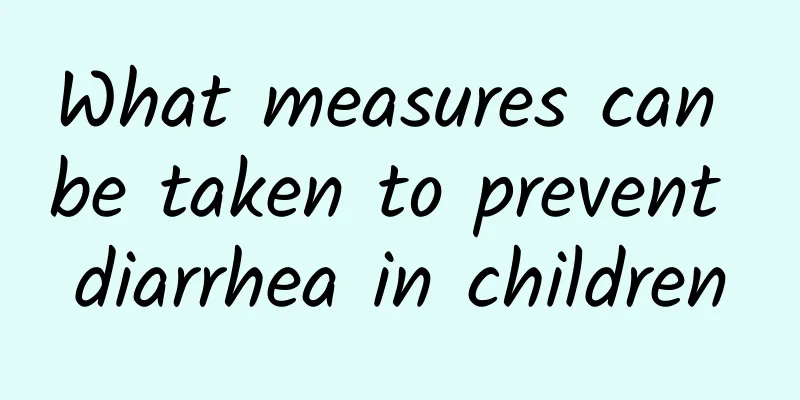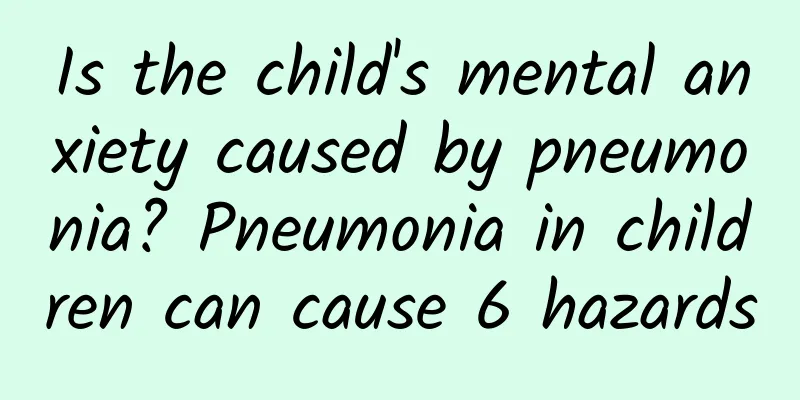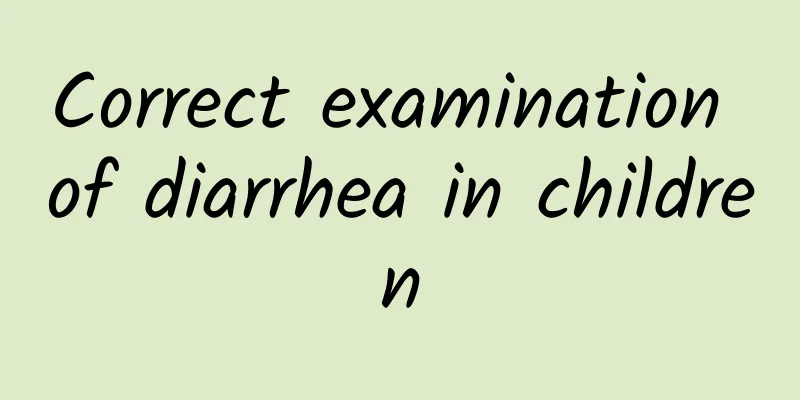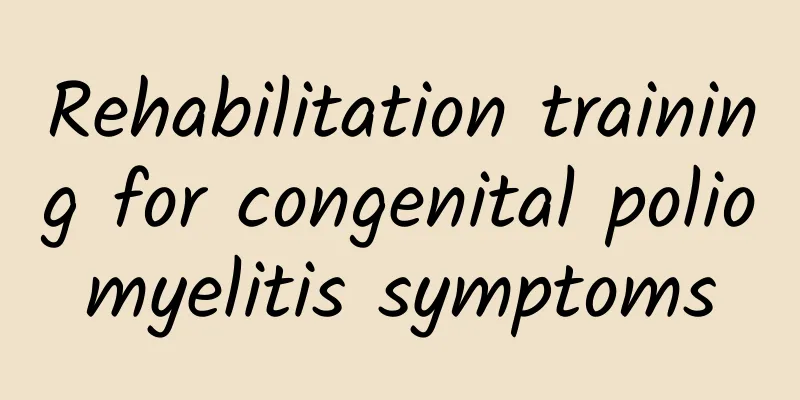How long does it take for neonatal jaundice to subside? Let's hear what the experts say

|
We must pay attention to the occurrence of neonatal jaundice, especially to distinguish the types, and then carry out targeted and reasonable treatment. At the same time, we must also pay attention to the reasonable care and nursing of the baby. How long does it take for neonatal jaundice to subside? Neonatal physiological jaundice: Newborns begin to develop jaundice 2-3 days after birth, which is most obvious after 4-5 days and disappears naturally after 7-14 days. Generally, the condition is good and there are no adverse reactions. This is called "physiological jaundice". Premature babies have more immature liver function, so jaundice will appear later, around the 3rd or 4th day, and it will last longer. Jaundice in premature babies can last for 14 days or longer. Neonatal breast milk jaundice: Jaundice starts 4-7 days after birth and lasts for about 2 months. It is mainly characterized by increased unconjugated bilirubin and has no clinical symptoms. Neonatal pathological jaundice: Jaundice appears early, within 24 hours after birth. Jaundice is persistent, and jaundice persists or even deepens 2-3 weeks after birth, or it is relieved and then deepens. Severe jaundice, golden yellow or jaundice all over the body, with obvious jaundice on the palms and soles, or serum bilirubin greater than 12-15 mg/L. Accompanied by anemia or pale stool color. Abnormal body temperature, poor appetite, vomiting, etc. If it is physiological jaundice, no treatment is needed. If it is pathological jaundice, the main treatment is blue light, so you must go to the hospital's pediatric department for treatment and retest the transcutaneous bilirubin to understand the treatment effect. Regardless of the cause of pathological jaundice, severe cases can cause kernicterus, which has a poor prognosis. In addition to causing damage to the nervous system, severe cases can cause death. Neonatal jaundice treatment 1. Characteristics of neonatal pathological jaundice: Neonatal jaundice often appears within 24 hours after the baby is born, lasting for more than 2 weeks, and more than 3 weeks for premature babies; jaundice disappears and reappears after birth and progressively worsens. The color of jaundice is mostly nearly golden yellow, and the location of the jaundice can be all over the body, especially the palms and soles. Severe jaundice can be combined with kernicterus. In addition, due to different causes, there are often accompanying symptoms of the primary disease that causes jaundice. 2. Treatment of neonatal pathological jaundice: (1) Phototherapy: It is a safe and effective method that can be given for 24-48 hours and repeated if necessary. Note that the baby should be naked during phototherapy, but care should be taken to protect the baby's eyes and genitals. (2) Hormone therapy: Hormone therapy can increase liver enzyme activity, promote the combination of glucuronic acid and bilirubin, and prevent antigen-antibody reaction. Hydrocortisone or dexamethasone can be injected intravenously or taken orally. (3) Plasma or albumin transfusion: Plasma protein can bind to indirect bilirubin (1g albumin can bind to 15mg bilirubin), thereby reducing the binding of indirect bilirubin to brain cells, thus reducing the incidence of kernicterus. (4) Phenobarbital, as an enzyme inducer, can activate glucuronyl transferase and accelerate the glucuronidation of indirect bilirubin. The dose is 5 mg/kg body weight/day, orally. (5) Treatment with traditional Chinese medicine: Oral administration of Junchenhuang (Coptis chinensis, Phellodendron chinense, Phellodendron amurense, Gardenia jasminoides, Junchen, and Rhubarb) or Junchenhao decoction. Neonatal jaundice care 1. Nursing methods for neonatal hemolytic disease: If the baby is diagnosed with neonatal hemolytic disease, treatment must be given as soon as possible and should not be delayed. Generally, blue light irradiation is more effective. If the hemolytic disease is severe, exchange transfusion therapy is required. 2. Nursing methods for neonatal biliary atresia: If the baby is diagnosed with neonatal biliary atresia, surgery must be performed within 2 months after birth. If surgery is not performed in time, the disease will gradually develop after 3 months and will lead to cirrhosis of the liver. 3. Care methods for neonatal hepatitis: If the baby is diagnosed with neonatal hepatitis, the condition will improve quickly after liver protection and other treatments, and there will generally be no serious consequences. Precautions for neonatal jaundice 1. Determine the degree of jaundice. Parents can observe the degree of yellowing of the newborn's skin under natural light. If only the face is yellow, it is mild jaundice; if the skin of the trunk is yellow, it is moderate jaundice; if the limbs and palms and soles are also yellow, it is severe jaundice. 2. Observe the color of stool. If the stool is clay-colored, pathological jaundice should be considered, which is mostly caused by congenital bile duct malformation. If the jaundice is severe, accompanied by symptoms or abnormal stool color, you should go to the hospital in time to avoid delaying treatment. 3. Expel meconium as soon as possible. Because meconium contains a lot of bilirubin, if the meconium is not completely excreted, the bilirubin will be reabsorbed into the blood through the special enterohepatic circulation of the newborn, causing jaundice to increase. 4. Give the newborn plenty of water. Too little urination is not conducive to the excretion of bilirubin. 5. During the jaundice period, pay attention to providing enough sugar water and heat, and protect the liver. 6. If jaundice appears too early or disappears too late, or the jaundice is too severe, or it gradually improves and then worsens again, and if the baby has clinical symptoms such as poor spirits, less milk sucking or refusal to feed, it is pathological jaundice and you should go to the hospital for diagnosis and treatment in time. |
<<: Jaundice can affect children's liver health. How should children with jaundice be treated?
>>: How to check for hand, foot and mouth disease
Recommend
What are the social skills training for ADHD?
ADHD is a common psychological disorder in childr...
What are the correction methods for polio?
I believe many people are familiar with the word ...
How to take good care of acute laryngitis in children
Every child is a treasure in the palm of his or h...
What should I do if my two-month-old baby has a cough? Will drinking more water help if my two-month-old baby has a cough?
We all know that babies' physical indicators ...
What is the syrup used in western medicine to treat children's colds?
Children's colds can usually be treated with ...
What are the common causes of indigestion in children? What should be paid attention to in preventing indigestion in children?
Infant indigestion refers to symptoms of digestiv...
Precautions after pediatric hernia surgery, 4 nursing measures for children after hernia surgery
When a child has hernia, they should be actively ...
What is jaundice caused by high total bilirubin?
What causes high total bilirubin jaundice? If the...
What causes breast milk jaundice?
Breast milk jaundice is usually divided into earl...
Which department should I go to for diagnosis of ADHD in children?
To diagnose ADHD in children, you should go to a ...
What are the tips for children to use cupping to relieve cough? What should be paid attention to when using cupping to relieve cough in children?
For children with coughing symptoms, cupping can ...
How long is the best time to expose your baby to the sun for jaundice?
Most newborns will have jaundice when they are bo...
What are the dangers of misusing antibiotics for children with diarrhea?
Diarrhea is a common disease in daily life. Child...
Does jaundice of 16.8 need blue light treatment?
Jaundice refers to the bilirubin in the blood, wh...
What can you eat if you have polio?
Polio is a common pediatric disease. Nowadays, ma...









